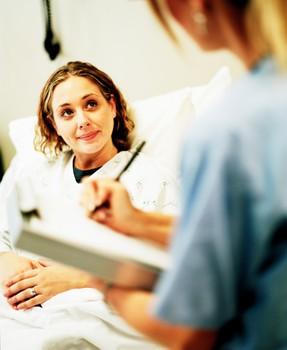
Follicle is a type of cystic structure that is mainly produced in female’s body during the time of usual menstrual cycle. Progesterone and Estrogen are the two different types of hormones present in female’s body and these two hormones are mainly responsible for reproduction and they are produced by follicles. If in case the follicles keep on growing continuously then ovarian cyst may develop. However, in some serious cases the continuous growth may lead to Ruptured Ovarian Cysts and as a result the nearby organs may also get affected.
In most of the cases ovarian cysts is detected at the later phase because most of the female don’t feel or experience any kind of pain, or any other symptoms that can distinguish or make her undergo any kind of medical screening. In many cases ovarian cysts usually disappears without any kind of medical treatment after the first or second menstrual cycle. There are mainly two diverse kinds of ovarian cysts – Complex and simple. The one that possess both solid and fluid is called as complex ovarian cysts and the one that possess only fluid is known as simple ovarian cysts. There are various kinds of complex cysts found namely Cystadenomas, endometriomas and dermoid cysts. Some of the functional and simple ovarian cysts are Graafian cysts and Follicular cysts. It is observed that there is less chance to develop cancer in simple ovarian cysts. But, the complex ovarian cysts are likely to develop into cancer reason why conservative way of treatment is used to treat complex ovarian cysts.
During a regular pelvic examination or in an ultrasound asymptomatic ovarian cysts are seen in females. Small sized ovarian cysts favorably situated are also seen after few menstrual cycles. In some cases the symptoms of ovarian cysts can be observed clearly. The symptoms may vary from person to person. Some females may experience painful and irregular menstruations while some females may experience painful intercourse and pain during defections. In some cases abdomen pain can be experienced by the person that may later expand to buttocks and thighs. This may later result into Ruptured Ovarian Cysts.
If the ovarian cysts are present then normal pelvic examination is done to diagnose it. To confirm the diagnosis the doctor will take help of ultrasound. With the help of ultrasound the doctor will find out the location, composition and actual size of the ovarian cysts. Before starting the treatment there are various aspects that a doctor will ponder such as pace of growth, size, location of the cysts, kind of cysts, and its age. In the case of Ruptured Ovarian Cysts peritonitis, shock and internal bleeding may occur.
If the person is suffering from Ruptured Ovarian Cysts then the best alternative available with a doctor is surgical removal of cysts. The traditional way of treatment is key hole surgery which is also popular as Laparoscopy where minute slits are created in the abdomen of the patient. However, alternative medicines are also available that can only be used at early stage.

